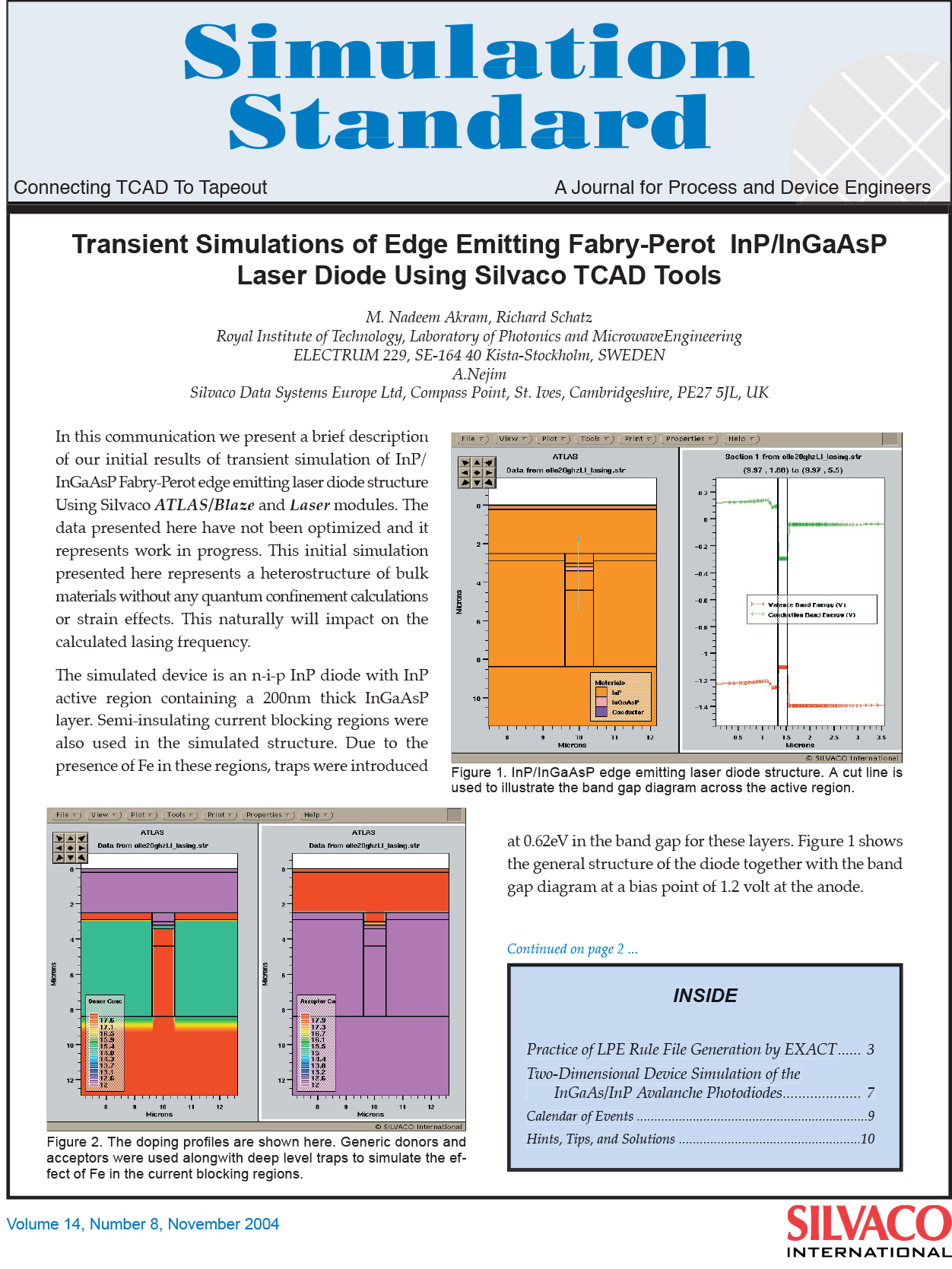Transient Simulations of Edge Emitting Fabry-Perot InP/InGaAsP Laser Diode Using Silvaco TCAD Tools
M. Nadeem Akram, Richard Schatz
Royal Institute of Technology, Laboratory of Photonics and MicrowaveEngineering
ELECTRUM 229, SE-164 40 Kista-Stockholm, SWEDEN
A.Nejim Silvaco Data Systems Europe Ltd, Compass Point, St. Ives, Cambridgeshire, PE27 5JL, UK
In this communication we present a brief description of our initial results of transient simulation of InP/InGaAsP Fabry-Perot edge emitting laser diode structure Using Silvaco ATLAS/Blaze and Laser modules. The data presented here have not been optimized and it represents work in progress. This initial simulation presented here represents a heterostructure of bulk materials without any quantum confinement calculations or strain effects. This naturally will impact on the calculated lasing frequency.
The simulated device is an n-i-p InP diode with InP active region containing a 200nm thick InGaAsP layer. Semi-insulating current blocking regions were also used in the simulated structure. Due to the presence of Fe in these regions, traps were introduced at 0.62eV in the band gap for these layers. Figure 1 shows the general structure of the diode together with the band gap diagram at a bias point of 1.2 volt at the anode.
Simple doping profiles were used as shown in Figure 2 to achieve the current blocking effect. This can be seen clearly in Figure 3 where the total current contours can be seen. Each of the colored contours represents an equal portion of the total current running through the device at the chosen bias of 1.2 volts. Also shown at this bias is the light intensity from the active region of the laser diode. Figure 5 shows the energy spectrum of the emitted photons at the same bias of 1.2V.



